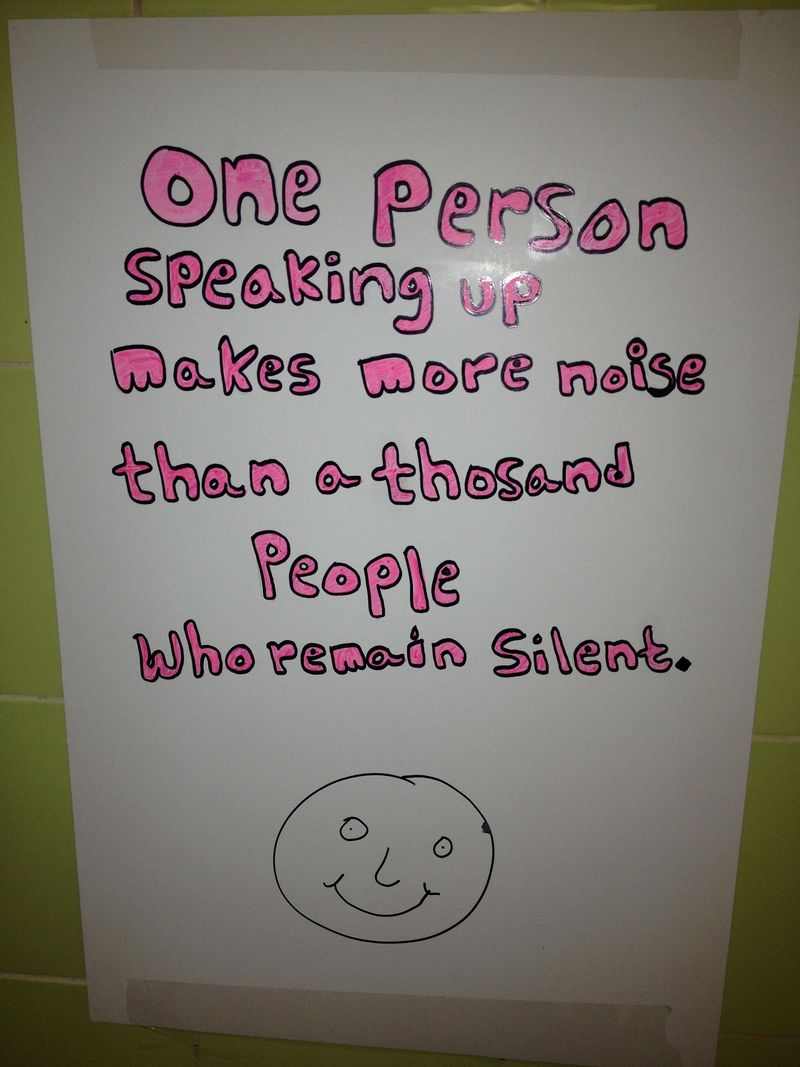A couple of weeks back, Sandy Merz wrote on this blog about his decision to join the union. Until the end of this school year, we worked in the same district. His piece caused me to reflect about why I joined our local professional association when I changed districts five years ago. I also have unanswered questions about my decision to continue to pay my steep dues over those five years, but I made a conscious decision to stay, and I do not regret it.
First of all, let’s distinguish between a true union and a professional association. In Arizona, there are no true teacher’s unions. A union not only has bargaining rights with the district (or corporation), but can use those rights to negotiate mandatory membership from all employees. In other words, if we had a true union, I would not have had the choice. Membership would have come along with my contract. Arizona’s “right to work” policies make it harder for “unions” to gain traction because it is harder to gain the numbers that would pressure a district bargain with the union. When those numbers are there, the union has the power to become a bargaining unit for all employees. That’s what we have in Arizona. Any professional association that has the power of a union to negotiate with the district only has that power because of its numbers. So, the reason that the local in our district have a voice in the district is because teachers and classified staff choose to combine their voices in chorus. The “union” gives teachers and staff a voice in policy.
I agree with Sandy that many times the voice of our professional association has been mysteriously silent, or seems to tolerate a status quo that baffles the mind. For instance, except for a small raise two years ago that barely covered the increases in health insurance premiums and increased retirement contributions, I did not experience any increase in income over my five years in the district. My take home pay remained the same. When I moved north two hours to a city that is known as a bastion of conservatism, I got a $10,000 raise. 25%. Also, as I’ve written before, huge pay inequities result when teacher pay is frozen as often as it is in my old district. It’s hard to see sizable dues debits coming out of my checking account under these circumstances. And yet I am glad I stayed.
Here’s why I am a “union” member: A voice. I came to TUSD from a district where the professional association was very small. There were strong grassroots school improvement initiatives within my school led by visionary teachers (who eventually left to start their own charters), and yet when it came to district policies regarding pay, health benefits, and class size, the teachers had no real voice. Ten years ago, we truly had teachers who were “leading from the middle” as Andy Hargreaves and Dennis Shirley would call it, and yet they were not allowed to be leaders beyond the classroom and school level. In addition, the teachers had no voice when budgets became tight. After I left, they were required to teach six sections of classes at the high school when traditionally they had never had more than five. In TUSD, student load caps must be honored, and such a drastic change of duties would have spurred negotiations (or at least grievances). It’s easy to take for granted the guarantees of no extra duty without pay, or a decent lunch time, or a defined contract day with no meetings scheduled after it is over. But these are things that the professional association helped to negotiate.
In addition, being a member of the statewide organization allows us to have a lobbyist in Phoenix, and to be represented by lawsuits that AEA has fought (and won) against a legislature that raided education funds for several years to create a balanced budget, and passed laws unfairly limiting the activity of teacher’s unions while protecting the unions of other public servants such as police and firefighters. Although I have not been very active politically within the union, I was introduced to the experience once when I first came to the district, and was amazed at how accessible the state legislators are to union groups that want to talk. Of course, this guarantees nothing in terms of legislation, but the union provides a gateway to become politically savvy about education issues and keep the pressure on at the state level. And although I have not continued to lobby legislators, I am happy to know that my dues help others to do so.
Being a member of our professional organization has also helped me and others to negotiate personal situations with administion. Imagine a student confronted you physically and then claimed that you pushed her? What voice would you have? I had a voice, an Area Representative at our school who was experienced and savvy about how to handle the situation so that it did not needlessly escalate. As you might guess, I was quite emotional and had plenty to say on the topic. My AR talked me down, helped me access legal counsel provided by AEA, and helped me write a response that was focused on the relevant facts and not my emotions. I was incredibly thankful for the responsiveness, supportiveness, experience and rationality of my union. This is what the AR’s do all the time, in addition to involving themselves in policy decisions within the school and district. Union reps free us up to do our jobs.
I, too, hope that professional organizations in Arizona can move beyond protectivism and into more progressive ventures that help to redefine the teaching profession. Groups such as the Arizona Teacher Solutions Team (and other notable reformers) have clearly outlined their hopes for the profession, and although at the state level AEA seems very intent on being part of these movements toward greater teacher leadership, at the local level it feels we are still battling for our livelihoods, at least in some places. It will be interesting to learn the dynamics up here to the north, but I imagine that if there is a professional organization to join, I’ll sign up.









